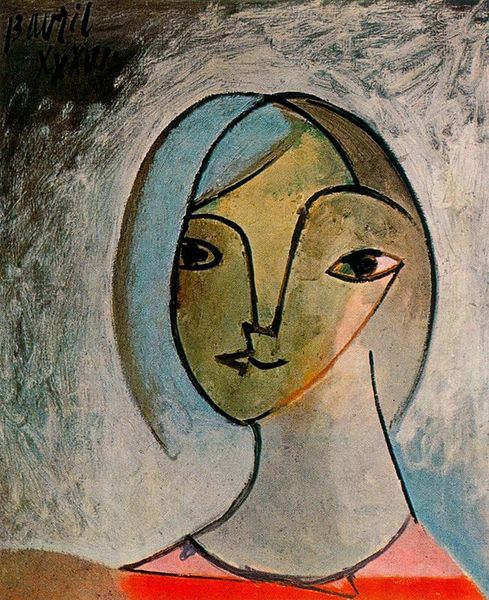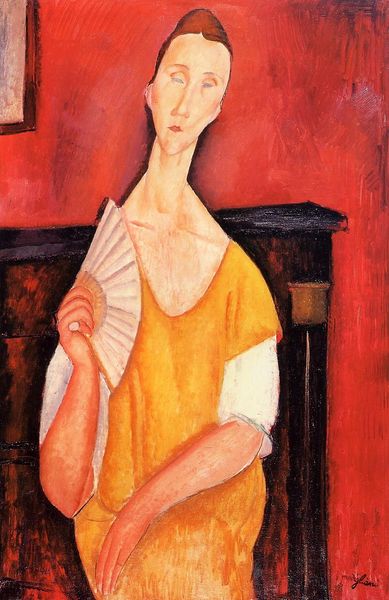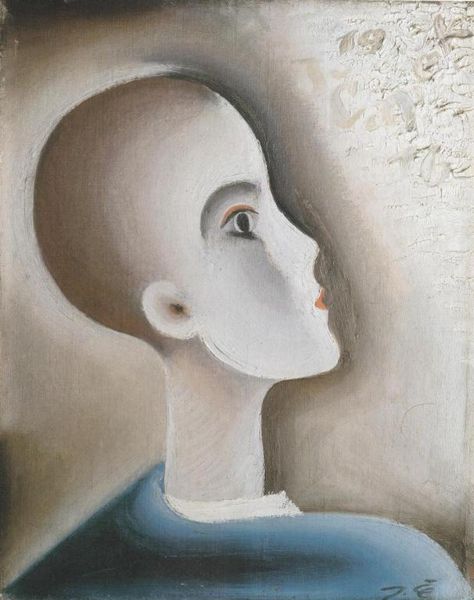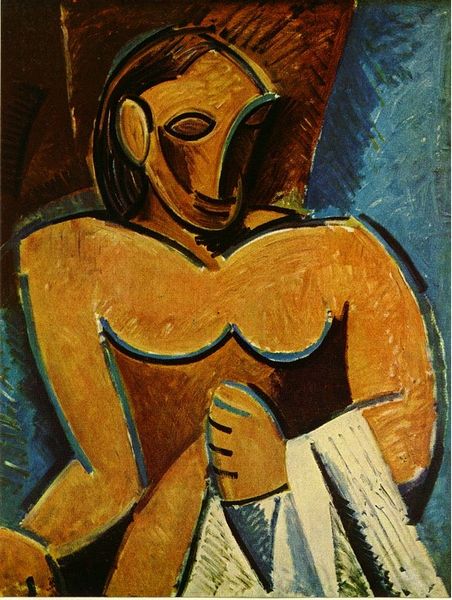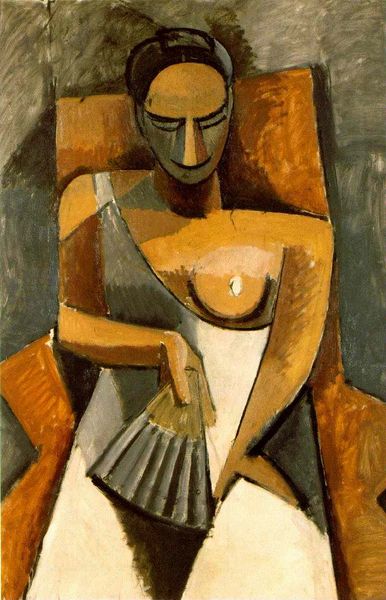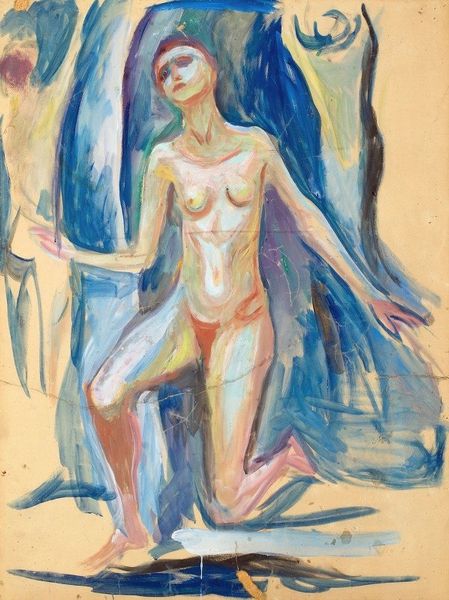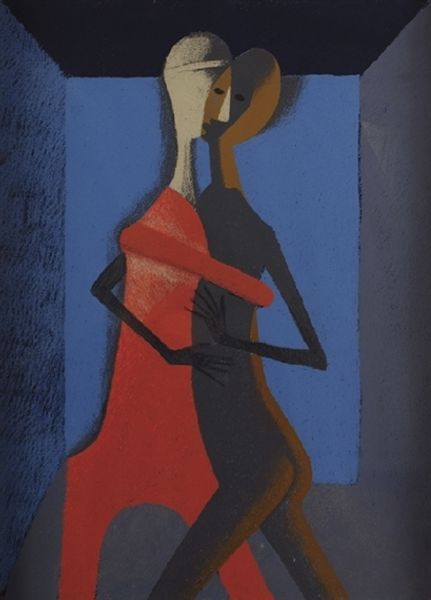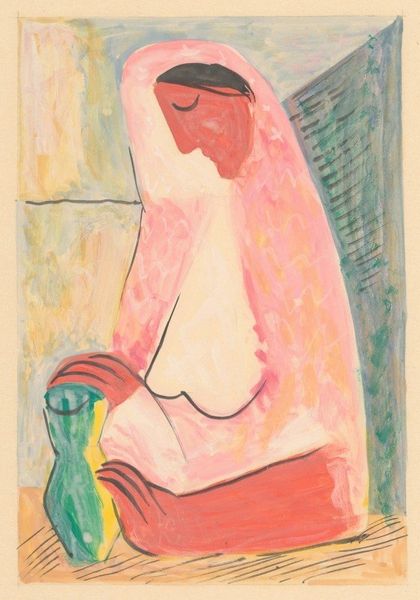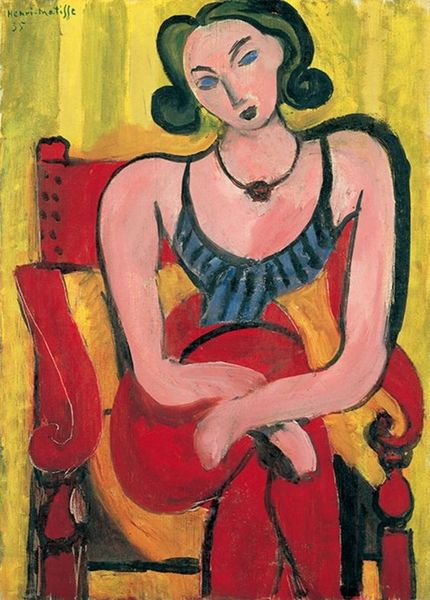
painting, oil-paint
#
portrait
#
painting
#
oil-paint
#
figuration
#
modernism
Copyright: Public domain
Editor: So, this is "Děvče s košem," or "Girl with a Basket," painted in 1923 by Josef Čapek, using oil paint. There's something incredibly serene, almost statuesque, about her. What draws your eye to this painting? Curator: Immediately, I am struck by the simplified forms and limited color palette. Notice how Čapek reduces the figure to geometric shapes, a hallmark of early Modernism. The cool blues of her skirt and headdress are juxtaposed against the warmer, earthy tones of her skin and the background, creating a subtle tension within the composition. Editor: I see that now – the shapes are simplified almost to the point of being abstract, but you can still recognize her figure. Is that intentional? Curator: Precisely. The tension lies in the balance between representation and abstraction. It forces us to consider not only *what* is being depicted, but also *how* it is being depicted. Look closely at the texture of the paint application – broad, deliberate strokes that further flatten the picture plane, emphasizing the materiality of the work. Editor: So it's not just *who* she is, but also how the painting is constructed? Curator: Indeed. We must attend to the pictorial structure. Ask yourself: what is the significance of that simplified, almost iconic, rendering of the figure within a relatively shallow pictorial space? It seems Čapek is more interested in exploring the formal possibilities of painting itself than in creating a realistic portrait. Editor: I never would have noticed that. Thanks to you, I see how Čapek uses form and color to give so much weight to this portrait. Curator: My pleasure. And considering these details enhances our engagement and understanding of the piece.
Comments
No comments
Be the first to comment and join the conversation on the ultimate creative platform.


